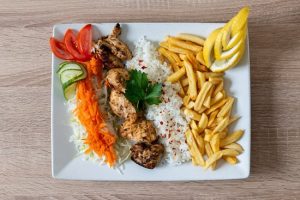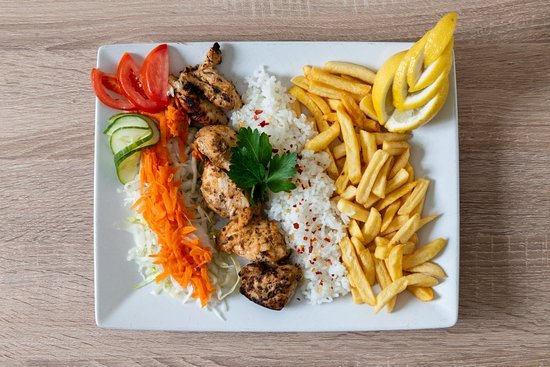Introduction
Germany, a country renowned for its precision engineering and rich cultural heritage, is also a treasure trove of culinary delights. In this article, we invite you to embark on a gastronomic adventure as we explore the top 20 iconic dishes that define German cuisine. From hearty sausages to mouthwatering pastries, Germany’s culinary heritage offers a diverse and delicious array of flavors.
Table of Contents
- Savoring Traditions: An introduction to Germany’s culinary heritage.
- Hearty Classics: Exploring the savory and comforting dishes that warm the soul.
- Bakery Wonders: Indulging in the world of German bread and pastries.
- Sweet Delights: Satisfying your sweet tooth with delectable German desserts.
- Regional Specialties: Discovering unique dishes from Germany’s diverse regions.
- Culinary Innovation: How Germany’s culinary landscape is evolving.
Savoring Traditions
Germany’s culinary traditions are deeply rooted in history and regional diversity. It’s a country where old-world charm and contemporary culinary innovation coexist, offering a delightful fusion of flavors.
Hearty Classics
1. Bratwurst
Description: Germany’s beloved sausages are made from pork, veal, or beef, seasoned with herbs and spices, and grilled to perfection. Served with sauerkraut or in a crusty roll, they are a staple of German street food.
2. Sauerbraten
Description: Sauerbraten is a pot roast typically made from marinated beef, often served with red cabbage, dumplings, and a rich, tangy gravy.
3. Wiener Schnitzel
Description: A thin, breaded and fried veal or pork cutlet, Wiener Schnitzel is often garnished with a slice of lemon and served with potato salad.
4. Kartoffelsalat
Description: German potato salad is known for its tangy flavor, typically dressed with a warm bacon vinaigrette and garnished with fresh herbs.

5. Rouladen
Description: Rouladen consists of thinly sliced beef, spread with mustard, and wrapped around pickles, onions, and bacon. They are then slow-cooked in a rich gravy.
Bakery Wonders
Germany’s bakeries are a wonderland of freshly baked bread, rolls, and pastries. From crusty pretzels to delicate strudels, German bakers have mastered the art of creating irresistible treats.
6. Pretzels (Brezeln)
Description: Pretzels are a beloved snack in Germany, characterized by their twisted shape and a sprinkle of coarse salt.
7. Black Forest Cake (Schwarzwälder Kirschtorte)
Description: This iconic dessert features layers of chocolate sponge cake, whipped cream, and cherries, often soaked in kirsch (cherry schnapps).
8. Stollen
Description: A fruitcake filled with dried fruits and nuts, Stollen is a Christmas staple, often dusted with powdered sugar.
9. Apfelstrudel
Description: Apfelstrudel is a thin pastry filled with spiced apples, cinnamon, and raisins, typically served warm with a dusting of powdered sugar.
10. Königsberger Klopse
Description: Königsberger Klopse are meatballs made from ground pork or veal, served in a creamy caper sauce, and often accompanied by potatoes or rice.
Sweet Delights
11. Lebkuchen
Description: These spiced gingerbread cookies, often heart-shaped, are a beloved treat during the Christmas season.
12. Marzipan
Description: Marzipan is a sweet almond paste used in various confections and often molded into intricate shapes, such as fruits or animals.
13. Eierkuchen
Description: Similar to pancakes, Eierkuchen are thicker and fluffier, often served with powdered sugar or fruit preserves.
14. Schneeballen
Description: These “snowball” pastries are deep-fried, doughy treats dusted with powdered sugar and available in various flavors.
15. Baumkuchen
Description: Baumkuchen, or “tree cake,” is a layered, spiral-shaped cake with a unique texture, often enjoyed during special occasions.
Regional Specialties
Germany’s diverse regions offer a bounty of unique and delicious dishes that showcase the country’s culinary diversity.
16. Haxe (Bavaria)
Description: Haxe is a roasted pork knuckle, known for its crispy skin and tender meat. It’s a Bavarian specialty often served with sauerkraut and potatoes.
17. Labskaus (North Germany)
Description: Labskaus is a hearty dish made from corned beef, potatoes, and onions, topped with a fried egg and pickles.
18. Maultaschen (Swabia)
Description: Maultaschen are similar to dumplings, typically filled with minced meat, spinach, and herbs, served in a flavorful broth or fried.
19. Kaiserschmarrn (Austria and Bavaria)
Description: Kaiserschmarrn is a fluffy, torn pancake often served with powdered sugar, fruit compote, or jam.
20. Labsal (Silesia)
Description: Labsal is a Silesian dessert made from layers of cake, whipped cream, and fruit, creating a delightful, creamy treat.
Culinary Innovation
As Germany continues to evolve, so does its culinary landscape. Innovative chefs are blending tradition with modern techniques, creating dishes that push the boundaries of flavor and presentation.
The Future of German Cuisine
The future of German cuisine holds promise and excitement, with chefs exploring sustainable practices, regional ingredients, and contemporary interpretations of classic dishes. Germany’s culinary scene is alive with innovation, ensuring that it remains a gastronomic destination for years to come.
Conclusion
Germany’s culinary heritage is a testament to its rich history, regional diversity, and unwavering commitment to flavor. As you explore the top 20 iconic German dishes, you’ll not only savor delicious bites but also gain a deeper appreciation for the country’s culinary traditions and its vibrant culinary future.
So, embrace the flavors of Germany, and let your taste buds embark on a flavorful journey that celebrates tradition, innovation, and the joy of savoring each delectable bite.




